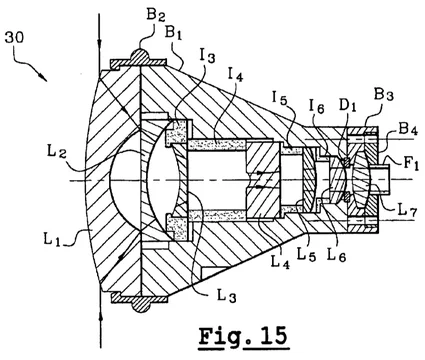
On Thursday, visiting Judge Wolson issued an opinion in SmartSky Networks, LLC v. Gogo Business Aviation, LLC, C.A. No. 22-266-JDW (D. Del.) addressing several summary judgment motions, one of which sought to invalidate a claim of one of the asserted patents as indefinite.
The claim related to a communication system for in-flight wifi, and required that a base station for the equipment emit a radiation pattern that is "oriented toward a horizon." The defendant claimed that that language is indefinite, and the Court agreed:
Claim 1 of the ‘717 Patent requires a radiation pattern that is “oriented toward a horizon.” 3 (D.I. 380-1 at Ex. 1, 12:1–24, 12:56–13:8.) But the patent offers no way for a POSITA to know what that means. The specification does not use the phrase “oriented toward a horizon.” When it uses the word “oriented,” it just describes a radiation pattern that is “oriented in a first direction” or a similar formulation. (E.g., id. at 2:44, 2:50, 4:47, 6:7, 7:53.) None of these descriptions permits a POSITA to know the boundary for when a particular orientation is “toward” a horizon. Therefore, Claim 1 of the ‘717 Patent is invalid.
SmartSky Networks, LLC v. Gogo Business Aviation, LLC, C.A. No. 22-266-JDW, at 9 (D. Del. Aug. 7, 2025).
The patentee cited the other patent-in-suit (from a common inventor) as explaining the meaning of "toward a horizon," but the Court rejected that evidence, noting that it didn't exist at the time of patenting:
SmartSky points me to evidence related to the ‘077 Patent to inform the meaning of the ‘717 Patent, but the application that led to the ‘077 Patent was filed two years after the application that led to the ‘717 Patent. That is, it didn’t exist when the application for the ‘717 Patent was filed. Therefore, by definition, it could not have informed a POSITA about the meaning of the ‘717 Patent at the time of the ‘717 Patent’s filing. It doesn’t matter that the ‘717 Patent and the ‘077 Patent have similar figures or a common inventor, as Gogo points out, because those two facts shed no light on how a POSITA would have understood the ‘717 Patent; at most, they shed light on how the inventor might have understood it subjectively. That’s not enough.
Id. at 9-10.
The Court also rejected an expert's attempt to define a specific angle for "toward the horizon" by approximating it from a figure in the patent:
SmartSky also points to Dr. Goldberg’s report, which explains that Figure 2 shows radiation patterns that extend toward the horizon at an angle of approximately 15 degrees above the horizon and shows where the wedge tops out. But that’s not an objective boundary. He estimated the angle based on visual approximation rather than any measurement grounded in the specification. . . . Federal Circuit precedent bars reliance on “patent drawings that do not define the precise proportions of the elements … if the specification is completely silent on the issue[.]” HockersonHalberstadt, Inc. v. Avia Group Int’l, Inc., 222 F.3d 951, 956 (Fed. Cir. 2000) (citation modified) (emphasis added). Because SmartSky presents no other evidence identifying an objective boundary for “oriented toward a horizon,” Gogo meets the clear and convincing standard for indefiniteness for Claim 1 of the ’717 Patent.
Id. at 10.
Honestly, the accused infringers here did a great job in targeting this language. It's not something that would have jumped out to me as indefinite, given that (to me, a person who does not fly planes) the horizon is a thing, and an antenna can be pointed "horizontally" towards it. But there was clearly more nuance here, and they identified the opportunity and succeeded in invalidating the claim.
A Seinfeld Side Note
I don't know what kind of blog we would be if we didn't also point out the great Seinfeld reference in the first paragraph of the opinion:
In days gone by, before getting on a flight, you could tell people you were about to leave, and then you could disconnect. Without internet connectivity, a flight was a time to read a book, watch a movie, or just go full David Puddy and stare ahead, doing nothing. [Seinfeld: The Butter Shave (NBC Television Broadcast Sept. 25, 1997).]
Id. at 1.
If you enjoyed this post, consider subscribing to receive free e-mail updates about new posts.



